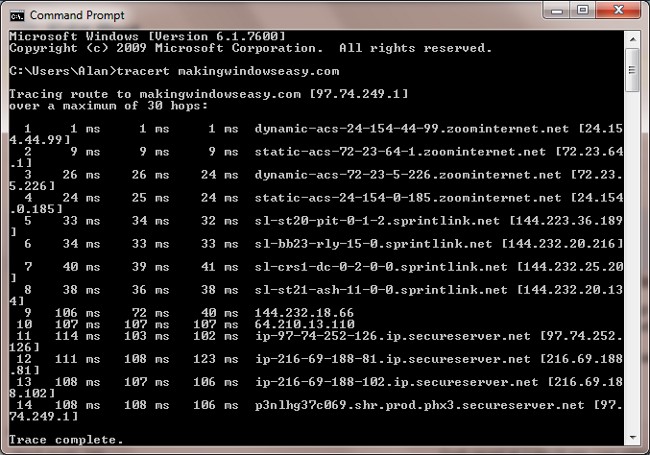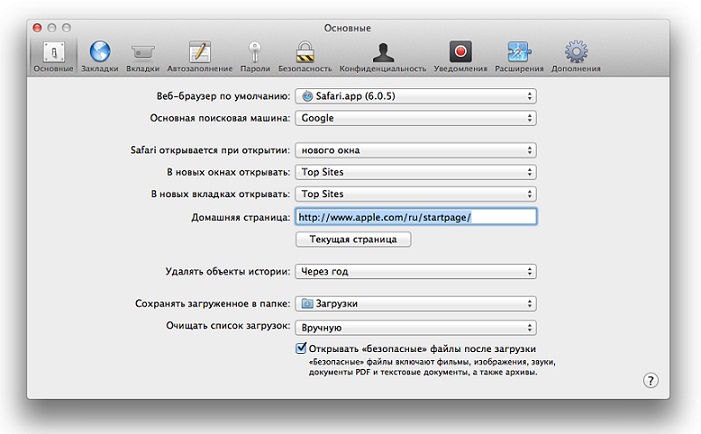Trace route: why is it needed?
 Imagine the situation: you sit on the Internet, do not touch anyone, and then your favorite site stops loading. The Internet has fallen, you think. But it turns out that other sites are loaded normally. How to determine what happened? You will help route trace.
Imagine the situation: you sit on the Internet, do not touch anyone, and then your favorite site stops loading. The Internet has fallen, you think. But it turns out that other sites are loaded normally. How to determine what happened? You will help route trace.Probably everyone knows that any site is on a server - a special computer. When we enter the address of the site in the address bar of the browser and click on the "Go" button, we thereby send request to the server. On the way to the site, our request passes several intermediate communication nodes, and if they are all right, then the site is displayed in the browser.
If the site does not load, it means that our request did not reach us problems at some of the communication nodes (intermediate computers or routers). The problem can be you yourself (for example,problem with the cable; although this will not load the rest of the sites), from your Internet provider or on the side of the site host. Determine on which part of the communication channel your request is lost, route routing will help.
The route is traced using the Traceroute / Tracert Utility. This program is included in the packagealmost all modern network operating systems (operating systems that support work in computer networks). In Microsoft Windows, this program is called tracert, and in Linux and Mac OS X, traceroute.
The operating principle of this program Similar to the principle of the ping program. Traceroute sends data to the server and at the same time captures all the intermediate routers through which this data passes on the way to the server (the target node). If the problem occurs when the data is delivered to one of the nodes, the program determines the network portion on which the problem has occurred.
How is the route traced in Windows? The tracert program, like the ping program, is run from the command line. Just in case, we remind you how to enter the command line in Windows. There are three main ways:
Click on the Start button, select Run, in the Open box, type cmd and click on the OK button or the Enter key.
Press the key combination Win + R (Win is the button that shows the Windows logo), the same window opens, as in the previous case, so we proceed the same way.
We click on the Start button, select the All Programs item (or Programs for earlier versions of the OS), in it - the Standard item, in standard programs click on the Command line item.
In the opened window, type the command tracert site_name (for example, tracert yandex.ru) and press the Enter key. Instead of the site address, you can enter its IP address (if you know it, of course). Entering the address, we thereby set the route to the final node. In the command window in real time, the trace results are displayed: the name and IP address of the intermediate nodes, the response time in milliseconds.
If you are not interested in the names of intermediate nodes, then route tracing should be performed with the -d option, which hides the names of the routers, for example: tracert -d yandex.ru.
How to use this data to solve the problem? The response time indicates the channel utilization. But even if the response time is long, the site will be loaded - albeit with difficulty. But if instead of the response time you see the inscription "Timed out request", this means that this data node is losing data, which means that the problem is in it.
So, Route tracing helps identify a problem node. If the data passes normally and "stop"at the destination, then the problem really is with the site. If the route tracing stops in the middle of the path, then the problem is in one of the intermediate routers. If the passage of packets is terminated within your provider's network, then the problem should also be solved "at the local level".
If the route tracing is interrupted on one of the intermediate routers, you can try go to the site from another computer or even a mobile phone - The route will change and the site can be accessed. To be faithful, you can try tracing from another computer. And if there is no other computer at hand, special online services. For example, on traceroute.org, you can trace the route to a site from different countries. You select in the list the country, provider, enter the address of the site and check the route.














